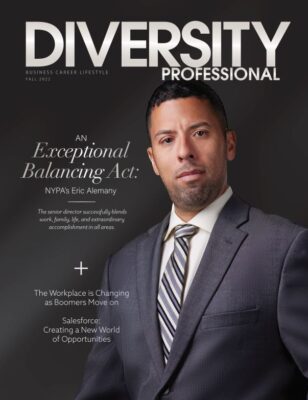Loose Change: The Complexity Of Office Power Dynamics
Management expert W. Edward Deming famously said, “It is not necessary to change. Survival is not mandatory.” But necessary change is happening in corporate America today, as people not only want to survive, they want to thrive. Workplaces are changing, dramatically, in many ways, but change comes with a catch.
Power dynamics in the workplace are rarely simple, obvious or instantly transformed. It’s a process and with inherent resistance to change itself; vestiges of traditional power dynamics can still hold sway. Whether consciously or not, and despite a commitment from leadership and buy-in from the rank and file, old attitudes and mores, or at least elements from them, can still prevail. When that happens, the key to success and satisfaction is how you identify and handle those outdated views when you’re subjected to them. What follows are some ideas in that regard. Remember this.
“It is not necessary to change. Survival is not mandatory.”
Every situation is different. What works best in one situation might be the worst course of action in another. So, please take all of these suggestions as just that—general guidelines that can lead to a potential solution. As always, it’s best to seek the counsel of friends, family, mentors, etc., before undertaking any particular actionable decision.
Workplace power dynamics are complex. In his article “Power Dynamics: Why the Open Door Isn’t,” Diamond Leadership’s Patrick Kitchen cites an example where two newly hired team members were assured that everyone was “welcoming and helpful” and that the team leader stated repeatedly that, “My door is always open. Don’t even knock. Anything you need, any question you have, just come in.” Within nine months (and two weeks of each other), both new hires quit. In exit interviews, the two former employees complained that “the team, and their leader, provided little guidance to get them up to speed” and that “they weren’t given clear responsibilities or role descriptions and that they lacked access to crucial information.” The problem? Perspective.
To the workplace veterans, the environment was open, friendly and convivial. To the “outsiders,” however, it was a different world. They were lost and no one proactively helped them. To them, the open-door policy was anything but open. “The onus to ‘knock on the door’—to act—is on the recruit, the one with the least amount of power in the situation. What the senior team member failed to understand is that every time newcomers have to ask a question, they risk exposing themselves as incompetent… ‘Knock on my door anytime’ is a generous offer to someone who feels at home, empowered and accepted. But to a complete rookie? Not so much.”
Perspective matters. So, when experiencing something that doesn’t quite feel right, it’s important to try to gauge and understand the originator’s intent. Of course, bad behavior and inappropriate language are never acceptable. But there can be gray areas where intent matters. Sometimes understanding context can make a difference and diffuse the situation. Knowing where someone is coming from can help reveal that certain words or behavior are not meant to offend. Either way, the first step is to examine the situation from several perspectives and then determine the intent as best you can.
Next, document each occurrence. In general, it’s always a good idea to take notes at work about anything that strikes you, both good and bad. Make it a habit. If you feel that you’re coming up against inappropriate language or behavior, describe in detail the words, actions, context, your feelings, location and the time. Write down each occurrence. Though you may never use these notes, they can prove invaluable if the situation escalates.
Then, reach out to the person who is causing the offense. Try to stay positive and non-confrontational; better still, stay neutral. Explain to him/her how you feel about the actions/comments and why they made you feel uncomfortable. Ask him/her politely to stop. But, then, listen. Give him/her an opportunity to respond and be heard. Often, this, alone, can solve the problem. Sometimes, though, this isn’t enough.
If talking with this person doesn’t work, reach out to other co-workers. Get a reality check. Has anyone else experienced something similar from this person? Have they seen this person treat you this way? If so, what did they see and when? Again, take note of their answers. Often, there is strength in numbers and good ideas can come from anywhere. Someone may have insight that could prove most helpful.
Finally, if nothing else works, reach out to HR and/or your boss (or your boss’s boss if that boss is the problem). In a positive manner, explain to HR or your boss/boss’s boss that there is a situation that is making you uncomfortable. Explain that you reached out to the person, but that it hasn’t changed anything. Then, ask him/her for advice on how best to proceed. But be forewarned. Even if done with the best of intentions, this could alienate your co-worker, your boss or your boss’s boss. That’s why it’s critically important to reach out to the offender and try and deal with it on a personal basis. Also, even though most HR professionals are honest, hard-working, caring professionals, it’s important to remember that HR is still a department of the company and their first priority is to the company itself and maintaining its smooth operation.
Because of traditional power dynamics in the workplace—past attitudes and behaviors—change can be inevitable. It certainly won’t happen overnight. But most of the time, finding a direct way to diffuse the situation yourself can be the best course of action.









